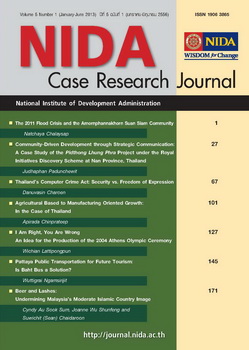Pattaya Public Transportation for Future Tourism: Is Baht Bus a Solution?
Keywords:
Inbound tourism logistics, Demand Responsive Transportation, Logistics designAbstract
Pattaya’s dramatic economic growth had not only attracted tens of thousands of new residents and millions of tourists, but had also ushered in the kind of vexing transportation woes. The issue was an increasingly worrisome one for Pattaya city hall and for other entities involved in designing, planning, developing, and administering transportation systems. Pattaya’s inbound tourism logistics had special characteristics, in that the city had long used the “baht bus” (the so-called rot-song-taew) as its primary mode of public transportation. A key issue is whether the ubiquitous blue-colored baht buses could be re-conceptualized and enrolled into the mix of options for addressing Pattaya’s chronic traffic problems. Particularly in conjunction with an approach to urban transportation systems known as “Demand Responsive Transportation” (DRT), the baht bus was viewed by some inbound logistics specialist and R&D personnel in Pattaya city hall as having the potential to become a core component of an innovative inbound logistics system for the city.
The case presents basic logistics information on Pattaya tourism -- such as baht bus responsiveness and the operating costs on each route -- for the use in conducting a logical design of DRT for all four baht bus routes. Further, the case study describes some conflicts of interest, constraints and limitations that occurred in earlier transportation development projects. It also insinuates both the inhibitors and the opportunities against for being scrutinized whether or not DRT is likely to be the tourism logistics solution for Pattaya.





